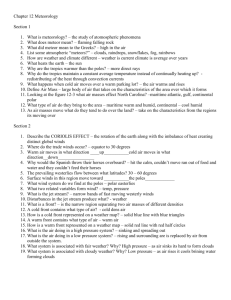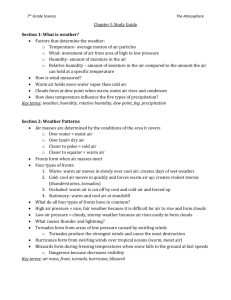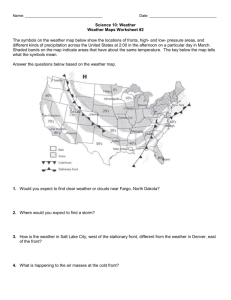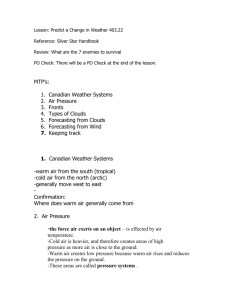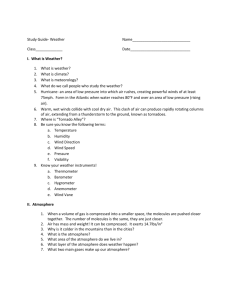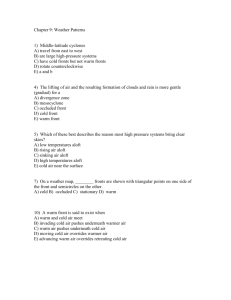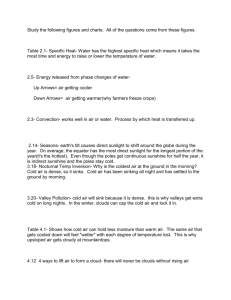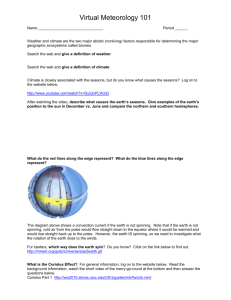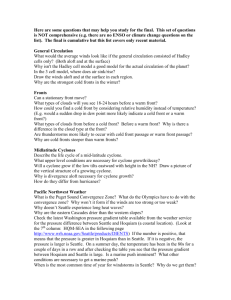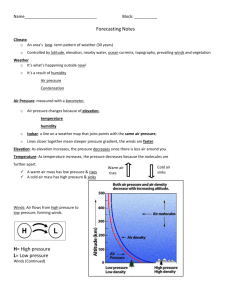Understanding the Weather13
advertisement
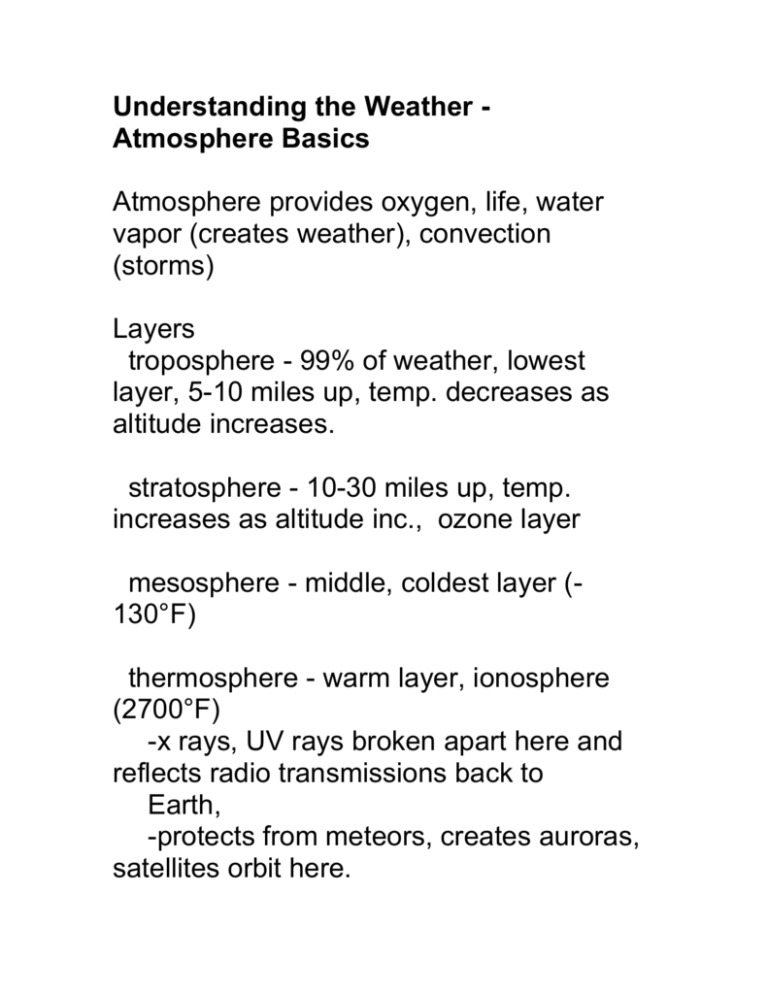
Understanding the Weather Atmosphere Basics Atmosphere provides oxygen, life, water vapor (creates weather), convection (storms) Layers troposphere - 99% of weather, lowest layer, 5-10 miles up, temp. decreases as altitude increases. stratosphere - 10-30 miles up, temp. increases as altitude inc., ozone layer mesosphere - middle, coldest layer (130°F) thermosphere - warm layer, ionosphere (2700°F) -x rays, UV rays broken apart here and reflects radio transmissions back to Earth, -protects from meteors, creates auroras, satellites orbit here. exosphere - 570 - 3000°F -space shuttle, satellites, auroras, gases He, N, O , Ar Sources of weather Sun’s heat is the origin of all weather air pressure - air molecules constantly pushing down on us -increase collisions - increase pressure, -14.7 lbs / in2, 980 - 1040 mb @ sea level convection - warmed material is less dense so rises, cools and sinks warm vs. cold - fast moving, expands, less dense vs. slow, shrink, more dense air rising / air sinking - rising is low pressure, sinking is high pressure high to low pressure - wind blows from H to L pressure, - Increase in difference of pressures, increase in wind speed -higher wind speed has closer isobars, low wind speed has widely spaced isobars clear vs. clouds - air sinks vs. air rises, cools, condenses forms clouds Seasons & cycles amount of energy reaching earth’s surface varies and influences climate earth’s orbit - ellipitical orbit which brings Earth closer to sun @ certain times increasing the amount of radiation rotation - spinning on its axis creating high and low temperatures seasons - tilt is 23.5° to or away from sun, so receives direct or indirect rays, S. Hemisphere has reversed seasons due to tilt. Global Winds heat @ equator, rises,low pressure, clouds, rain, when reaches tropopause spreads to poles, cools, sinks @ 30°N & S, high pressure, clear. Wind Cells Hadley Cells - air rises at equator (0°) and sinks at 30°N & S, George Hadley polar fronts - air moves poleward at 60°N & S meets cold polar air Ferrel Cells - circulation between 30° & 60°N & S rest of air sinks at poles Coriolus Effect most pronounced at poles (Gustave-Gaspard de Coriolus) clockwise - deflected to right in N. Hemisphere, high pressure spirals counterclockwise - deflected to left in N. Hemisphere, low pressure spirals Jet streams are high speed winds that develop from temperature and pressure differences -30,000 - 35,000 ft; speed 180 mph -strengthen and steers low pressure systems -winter - greater contrasts, shifted toward equator -summer - equalized, weakens and goes to poles Famous winds chinook - warm downsloped winds of the Rockies foehn - warm downsloped winds of Switzerland mistral - cold dry spiral conditions in France, wind forced through a valley Frontal systems are created as air masses move around Warm fronts - warm air moves over cold -characteristics - cirrus, middle level clouds, stratus with widespread precip, strong winds up to a day Cold fronts - cold air forces warm air up -characteristics - cumulus & cumulonimbus clouds with storms & heavy rain Stationary fronts - stalls out for a day or two Occluded fronts - cold air colliding with another cold front Air Pressure movement in N. Hemisphere caused by coriolus effect -low pressure cycles counterclockwise away from the Earth’s surface -high pressure cycles clockwise down to the Earth’s surface Mountain weather -windward side - clouds & rain -leeward side - dry & desert
